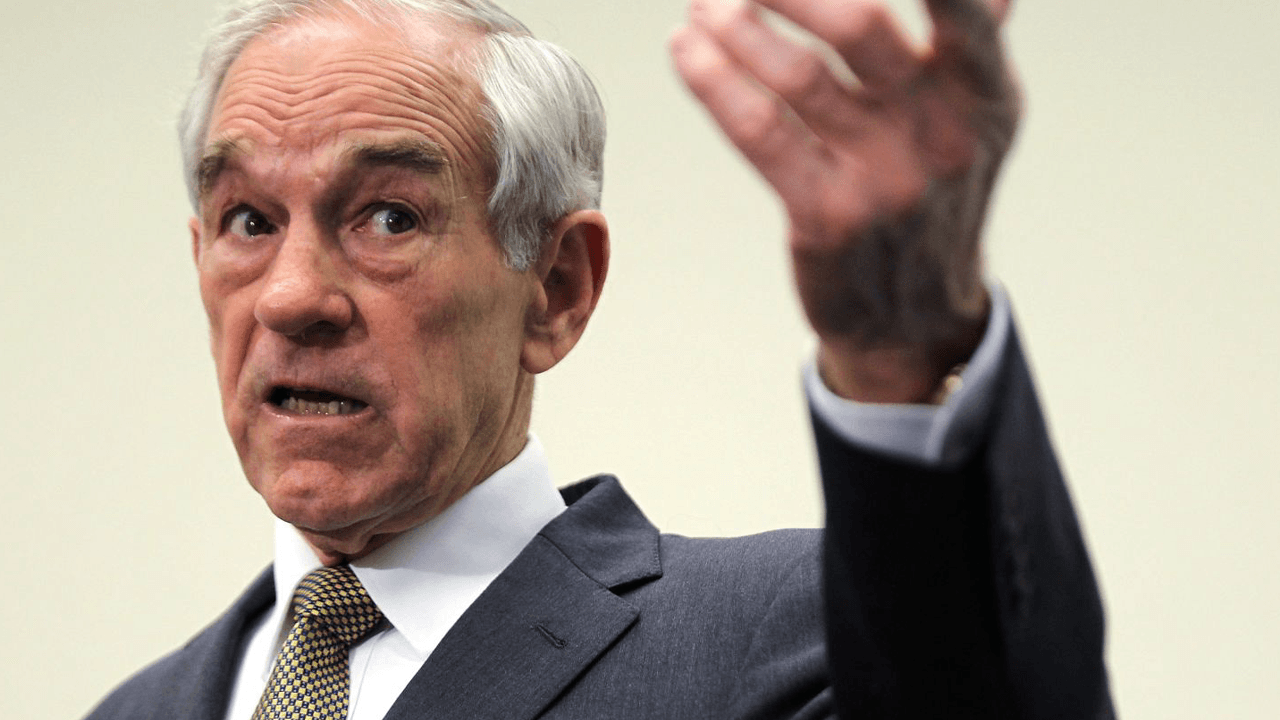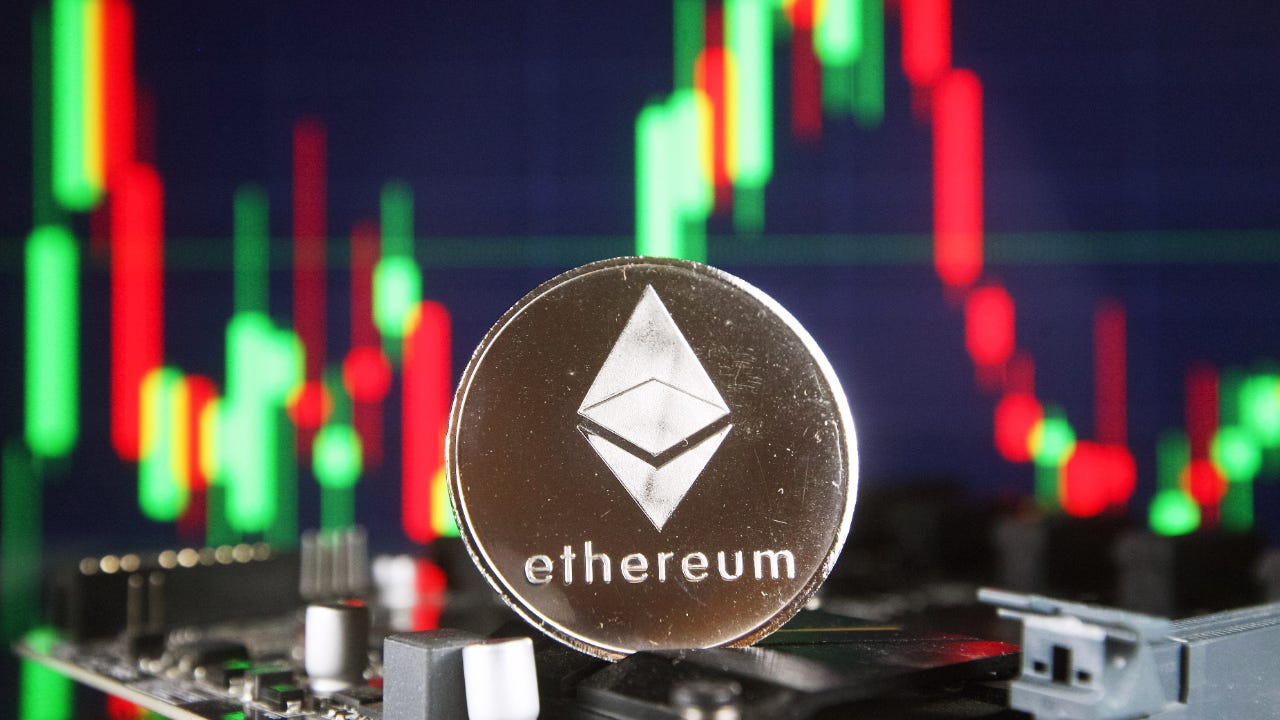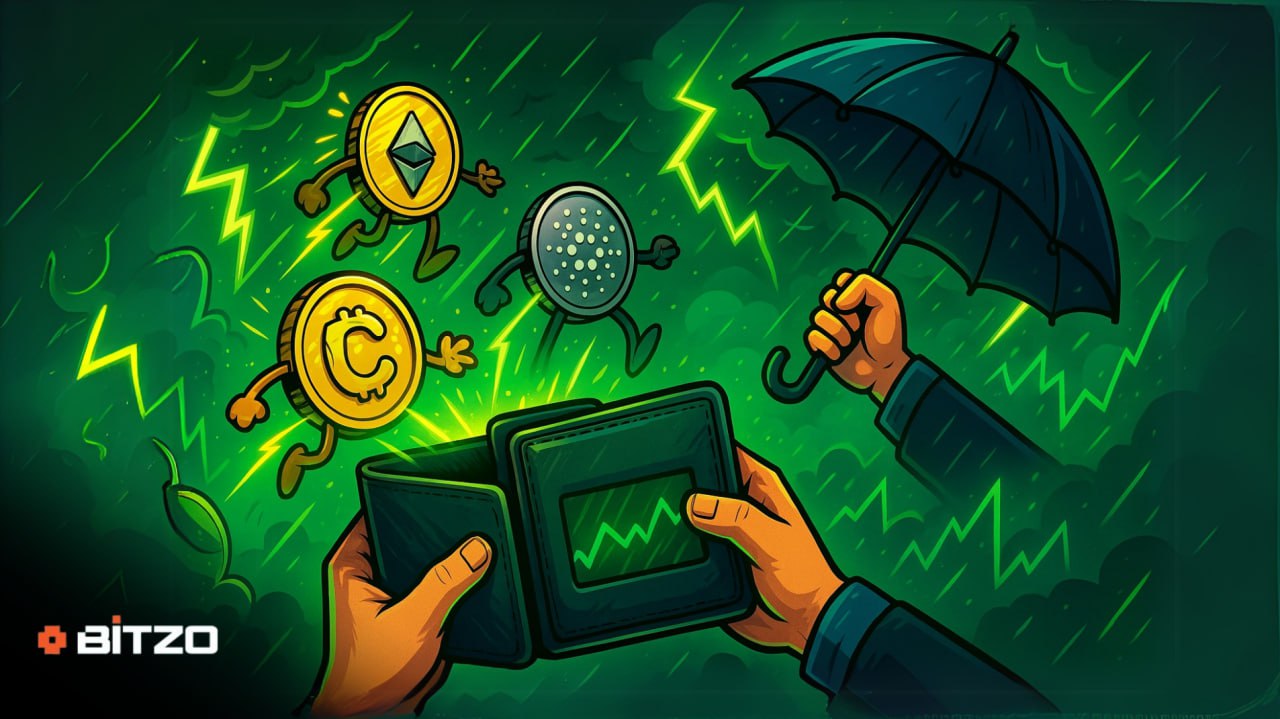
The Wall Street spot ETF craze for Bitcoin, followed by President Donald Trump’s historic overtures to the Web3 industry and reelection with a mandate in November, pushed its price to all-time highs. BTC entered Q4 last year at $60,800 and by Jan. 20th, shot up to a record of over $109,000. But soon after, the asset began a steep correction back to $85,000 to start off Q2. Bitcoin’s Price Dip in Q1 Traders who bought at the Oct. 1 price last year were up by 79% the day of Trump’s inauguration. If they held through Mar. 31, they would still be up by 40%. By most historical benchmarks, that’s very fast growth for the average American individual investor’s dollar. Some might say it is too fast and too risky, pointing to the volatility of Bitcoin markets, with such dramatic price swings in both directions. But interestingly, Bitcoin’s price isn’t the only global economic benchmark that traced a dramatic upward swing through 2024 with a steep correction starting in Q1 of this year. US stocks in the benchmark S&P 500 Index and Nasdaq Composite charted the exact same pattern. The 30-day BTC Pearson Correlation to US stocks has remained positive since last August. Moreover, the Bitcoin/stocks correlation accelerated into the financial melt up in Q4 and again during the course correction in Q1. So these trends indicated the macro forces in the economy for these price movements. Bitcoin’s Price and Orange Prices Locked in Weird Correlation Why orange juice is so expensive https://t.co/mF1WQn6LXi — CNBC (@CNBC) April 3, 2025 Here’s where it gets even more interesting. Bitcoin’s rally in 2024, bull run in Q4, and correction in Q1 also traced the same path through exchange markets that global orange prices followed over the same time periods. Although the average global price of an orange was $3.21 in Jan. 2024, by last December it had risen sharply to $5.09. But by last month, it had fallen to $2.71, according to IMF data at the Federal Reserve. It’s more economic data on the side of the theory that BTC’s price growth is mostly a function of the dollar’s expansion over GDP. Rising consumer prices are the same as Bitcoin’s rising prices in the same dollar tide. Curiously enough, this correlation between Bitcoin and the dollar has continued a trend ongoing since the 2023 and 2020 cryptocurrency markets. The post Should Investors Buy This Massive Bitcoin Price Dip? (Opinion) appeared first on CryptoPotato .
Crypto Potato
You can visit the page to read the article.
Source: Crypto Potato
Disclaimer: The opinion expressed here is not investment advice – it is provided for informational purposes only. It does not necessarily reflect the opinion of BitMaden. Every investment and all trading involves risk, so you should always perform your own research prior to making decisions. We do not recommend investing money you cannot afford to lose.
Crypto’s Biggest Barrier to Adoption? It’s Not Regulation — It’s UX

As the crypto industry matures, much of the focus remains on regulation, custody, and scalability. But in 2025, the biggest barrier to adoption isn’t policy — it’s user experience. Crypto’s interfaces are still too complex for everyday users. From managing seed phrases to deciphering blockchain transactions, onboarding feels more like navigating a maze than joining a financial revolution. Wallets remain fragmented, unintuitive, and risky. To reach mainstream adoption, the industry must prioritize usability — making wallets and financial tools more accessible — without compromising the core principles of decentralization. Until then, poor UX will continue to hold crypto back. Vitalik Buterin’s Call for Account Abstraction Ethereum co-founder Vitalik Buterin has been one of the most vocal proponents for improving the usability of crypto wallets. His critique centers on the fact that wallets are designed with developers, not end-users, in mind. While technical innovations in blockchain security are advancing, wallets often remain rooted in outdated models that prioritize control over ease of use, leaving the average user overwhelmed and vulnerable to mistakes. Buterin’s proposed solution (EIP-7702), account abstraction, is a breakthrough concept that could reshape how we interact with crypto assets. Account abstraction allows smart contract functionality to be applied to externally owned accounts (EOAs), the most common type of wallet used in crypto. This would enable more intuitive and flexible security mechanisms, such as social recovery, multi-signature support, and customizable authentication methods, without compromising decentralization or self-custody. At its core, account abstraction decouples the traditional reliance on a single private key for securing assets, creating the potential for much more user-friendly experiences. Rather than expecting users to memorize long and complex seed phrases or manage multi-step transactions, account abstraction can allow for recovery options, automatic transaction approvals, and even the option to delegate certain actions to trusted contacts — without ever losing ownership of the private keys. A Call for Human-Centered Design in Crypto Crypto’s UX problem isn’t just about cleaner interfaces — it’s about rethinking design to prioritize human needs. Historically, tools have been built for power users comfortable with seed phrases and command-line interfaces. But for mass adoption, crypto must serve people who’ve never held a private key. This is where human-centered design becomes essential. Developers must build wallets and tools that are intuitive, context-aware, and focused on user safety. The shift must move from catering to the technically inclined to empowering everyday users who are new to crypto. To succeed, wallets need to embrace the following core design principles: Smart Defaults and Progressive Onboarding: Users should not need to dive into settings or security configurations to get started. Newcomers should be able to start using a wallet with minimal friction, but with built-in guidance and the option to unlock more advanced features as they become more familiar with the space. By providing clear default security settings — such as social recovery options and automatic transaction limits — wallets can offer both ease of use and security from the outset. Clear, Intuitive Signing Processes: Transaction signing should be straightforward, with clear explanations of what users are agreeing to. If a user is about to approve a transaction that could drain their wallet, this should be prominently displayed in plain language, not buried under hexadecimal codes or complex jargon. Reducing ambiguity in these interactions will help mitigate the risks of scams and human error. Social and Multi-party Recovery Systems: Relying solely on seed phrases as a recovery method is an outdated and risky practice. Instead, wallets should adopt social recovery systems, where users can designate trusted parties to help restore access to their wallet in case of lost keys. This approach not only makes wallets more resilient but also adds a layer of user trust and security. Built-In Education and Contextual Help: To truly empower users, crypto wallets need to include educational tools directly within the interface. Contextual prompts, tooltips, and interactive tutorials can help users understand the significance of each action they take, without overwhelming them with dense technical documentation. Automation with Control: Features like auto-payment for transaction fees or the ability to batch transactions can make using crypto wallets much more intuitive, especially for newcomers. But these features must be balanced with user control. Users should have the final say over transactions, but automation can help reduce some of the cognitive load that crypto novices experience. The Future of Crypto Is Usability and Security—Without Compromise As crypto moves forward, the real challenge will be to reconcile usability with the core tenets of decentralization and security. Innovations like account abstraction are promising, but the industry must continue to prioritize human-centered design. The goal should be to design tools that make crypto accessible, secure, and simple — without sacrificing self-custody or decentralization. The future of crypto will not be determined by how fast blockchains can scale or how complex DeFi protocols can get; it will be defined by whether the average person can use crypto with confidence. Until then, crypto will remain an exclusive tool for developers and enthusiasts, rather than a technology that empowers the masses. The question is simple: Can crypto be both intuitive and secure, or will it continue to be a space designed only for the technically proficient? The answer will determine whether crypto achieves its promise of financial freedom for all. Crypto Potato

8 Charlie Munger Quotes for Investors Through This Bitcoin Price Retreat
Even though he has given no new interviews or made any major new investments from beyond the grave, Munger made the news again this week for his amazing work ethic and sound investment advice. An article that appeared on CNBC reprised an old Munger quote that investors who can’t handle bear markets “deserve the mediocre result” they are likely to get. Bitcoin Investors See Opportunity Ahead The article related another bit of sage wisdom from Warren Buffett’s long-time business partner: “Real opportunities that come to you are few… Most people just get a few times when they can make a huge difference by seizing a huge activity.” Many individual investors today believe that for them that opportunity is Bitcoin. ₿uy the Future pic.twitter.com/tIcwWe0leX — Michael Saylor (@saylor) April 10, 2025 Although Munger himself was very skeptical of Bitcoin and cryptocurrencies, BTC investors can apply his principled and disciplined thinking to crypto markets. With Bitcoin’s price down by 27% in April since its Jan. 20 all-time high above $109,000, these selected quotes from Mr. Munger may be as timely as ever. 1. Sorting Out Market ‘FOMO’ and ‘FUD’ During times of rapid adjustments to market prices, social media can fill investors with FOMO (Fear of Missing Out) and FUD (Fear, Uncertainty, and Doubt). While Crypto X is a source of timely information and sentiment about market prices for Bitcoin and other volume currencies, it can be an environment with a high noise-to-signal ratio. Charlie Munger said: “I try to get rid of people who always confidently answer questions about which they don’t have any real knowledge.” Crypto market posts that make extreme claims without evidence, arguments that contradict common sense, and that stoke feelings without providing additional information add to the noise. “I don’t trust bitcoin because it’s too vOlaTiLe” Meanwhile, the stock market in the span of 24h: pic.twitter.com/D2QkBZZEWr — Carla (@HodlingCarla) April 9, 2025 What set Berkshire Hathaway’s profits so far ahead of the stock market’s average gains was Buffett and Munger viewed Wall Street as a social media platform full of noise. Instead of setting up shop in Manhattan to bask in the echo chamber, these two spent their time far away from that noise reading the news and financial reports: “In my whole life, I have known no wise people… who didn’t read all the time… You’d be amazed at how much Warren reads, at how much I read.” Rather than let their emotions bounce up and down with the crowd, these two extraordinary investors worked to stay informed and make investing decisions scientifically based on the correct math over the relevant factors in their investments. 2. Bitcoin’s Price in This Bear Market Some market participants panicked as Bitcoin’s price fell by a third from its historic record high price level in January. “The market sentiment is full of uncertainty at the moment,” wrote Australian crypto exchange GroveX in a note on Apr. 8. Individual investors using Internet cryptocurrency exchanges and Wall Street investors using ETF funds dumped Bitcoin as well as stocks in a selling frenzy as Trump got to work measuring out tariffs on foreign imports. But Munger contends that following the crowd can lead to average results instead of outstanding performance: “Mimicking the herd invites regression to the mean (merely average performance)… Bull markets go to people’s heads. If you’re a duck on a pond, and it’s rising due to a downpour, you start going up in the world. But you think it’s you, not the pond.” Instead of following the crowd, Munger recommends investors do their own research, run the math, and follow the graph: “Mankind invented a system to cope with the fact that we are so intrinsically lousy at manipulating numbers. It’s called the graph.” #Bitcoin is going to infinity. pic.twitter.com/leEsbRkG37 — Sriram | theya.us (@sriramHODL) December 30, 2023 3. Bitcoin Macro Hedge Fundamentals In addition to Bitcoin’s current and recent price data, as well as its overall trend, there is the fundamental analysis of its network activity in relation to its price to consider. Charlie Munger and his partner, Warren Buffett, both liked to say: “I didn’t get to where I am by going after mediocre opportunities.” For over a decade now, in the world of currency investing, Bitcoin has been the most outstanding opportunity in terms of its novel design and function and its market returns. Bitcoin continues to signal its growing fundamental value with the ongoing massive expansion of the BTC mining network that secures all of its accounts and transactions. BREAKING: #Bitcoin Hash Rate just hit a NEW ALL TIME HIGH — going completely PARABOLIC! Every time this happened in history… Price followed soon after. Get ready. It’s coming. $BTC #Crypto #Altcoins pic.twitter.com/ajavbsIKL6 — @CryptoELlTES (@CryptooELITES) April 10, 2025 Because of the rapid pace of Bitcoin’s mass global adoption, MicroStrategy’s founder, Michael Saylor, has found outsized success in buying and holding BTC without selling during peaks or bear markets. Even if he never messed around with cryptocurrency, that investing strategy itself is right out of Charlie Munger’s playbook: “The big money is not in the buying and the selling but in the waiting.” Munger’s two largest positions that he bought and sat on patiently to build magnificent wealth were both in finance businesses like Bitcoin: Wells Fargo and Bank of America. 4. Altseason and Picking Altcoin ‘Gems’ During bear markets is when some of the altcoins with the most potential really shine. But it’s not necessary for the beginning crypto investor to bite off more than they can chew. Bitcoin is simple enough that Saylor built a market-leading strategy around aggressively buying and holding it. That’s in line with how Munger thought about his investments in stocks: “It never ceases to amaze me to see how much territory can be grasped if one merely masters and consistently uses all the obvious and easily learned principles.” But for those intermediate and advanced Bitcoin investors seeking opportunities with a higher risk-reward profile, long-term valuations for the top ten or so cryptocurrencies by market capitalization have plenty of factors worth investigating. Munger says: “Our job is to find a few intelligent things to do, not to keep up with every damn thing in the world.” PS: These 8 Warren Buffett quotes are rocket fuel for Bitcoin’s price today. The post 8 Charlie Munger Quotes for Investors Through This Bitcoin Price Retreat appeared first on CryptoPotato . Crypto Potato











